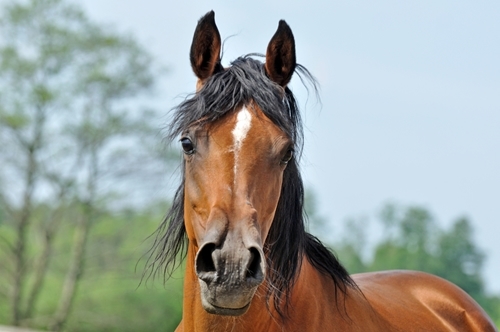Beyond words, humans use their faces in order to communicate everything from feelings and intent to more subconscious information. Similarly, horses rely on the very same methods, with the movement of their ears, eyes, mouth and nose all contributing to the communicative process. However, whereas humans have a detailed understanding of our own facial gestures and movement, researchers don’t have quite the compendium for horses and other animals. Until now, that is. In a new study published in the journal PLOS ONE, British scientists have created a comprehensive guide to horses’ myriad of facial expressions.
Facing the truth
As part of the study, a group of researchers from the University of Sussex adapted the Facial Action Coding Systems. Originally developed in the late 1970s for use with humans, FACS gave academics a comprehensive framework for understanding facial expressions by general intent. It’s since gone on to be used by everyone from animators to security specialists, who used the system to develop early versions of facial recognition software.
Researchers chose horses specifically to develop the animal-based FACS because of their empathy, as horses have a profound understanding of the emotional state of both their owners and stable mates. The Sussex team hoped that by offering people more insight into horses’ emotional lives, our connection with them would be all that greater.
In order to develop this new system, dubbed EquiFACS, the team used a method referred to as a “face mask,” which gives a detailed breakdown of the horses’ individual facial muscles and how they move and interact with one another. From there, the team viewed some 15 hours of wild horse footage, studying the movement of their faces across a number of situations. They compared the movement of those muscles to corresponding muscles in human faces, hoping to find some kind of overlap that would serve as a baseline. In all, they found 17 separate actions, which they used to create the final guide. Though it’s still in the early stages, the EquiFACS team believes that the system has applications in several specific fields, including socialization, domestication and psychological care.
Reading a horse’s face
In order to help trainers and riders improve their bonds with horses, the researchers are giving away EquiFACS for free. Not only will the manual be readily available online, but there will also be a certification process. Though that program will continue to develop as time goes on, the basic skills of becoming certified will remain the same.
Those using the EquiFACS system will be able to decode a horse’s facial expressions using either photographs or videos, with the manual serving as a support tool. There are a few key areas of focus when it comes to studying a horse’s face, including:
- Any wrinkles that appear or deepen.
- Which parts of the face move and in what direction.
- Alterations in the shape of the entire face.
To prevent any potential confusion, it’s important to focus on one sub-section of the horse’s face, like the eyes or the mouth, at a time. It’s also worth noting the absence of movements, as that can prove just as insightful. Even the number of times a horse does something, like blink its eyes, can speak volumes to its emotional state.
As for the actual setup you might use, high quality close-ups, either video or photo, are best, as these shots will provide the most detail. Just don’t forget to study the horse’s neutral face beforehand, which can help determine the extent a horse’s face shifts overall.
Understanding the basics
Before tackling the EquiFACS system, it’s a good idea to understand the very basics of horse facial expressions. According to EquiSearch, horses use all of their senses and facial features to communicate. As such, it’s important to pay attention to the movements of each body part:
- Ears: Forward means the horse is paying attention. If they’re pricked upward, then the horse might be frightened.
- Flared nostrils: The horse is in an agitated state and may kick or bite momentarily.
- Wide eyes: If the horse is showing the whites of its eyes, it could be ready to flee.
- Snapping: Found mostly in young horses, this is when they open and close their mouth repeatedly. This usually means the horse is scared.
- Elevated head/neck: The horse is especially aware and alert.
Horses also use their face to express pain, HorseTalk noted. Often times they will make an actual grimace, similar to that of most humans.








